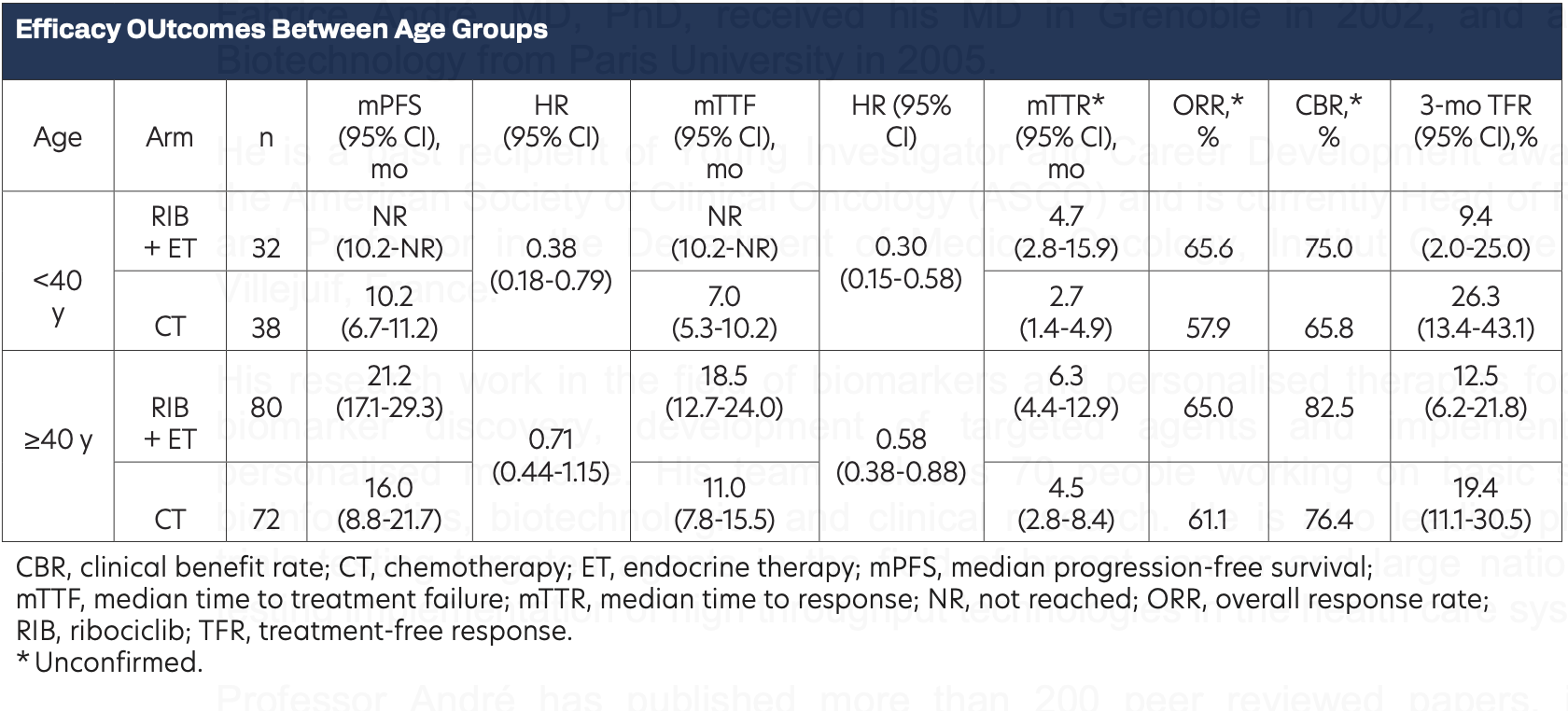14 Outcomes With First-Line (1L) Ribociclib (RIB) + Endocrine Therapy (ET) vs Physician’s Choice Combination Chemotherapy (combo CT) by Age in Pre/Perimenopausal Patients (pts) With Aggressive HR+/HER2– Advanced Breast Cancer (ABC): A Subgroup Analysis of the RIGHT Choice Trial
Background
The phase 2 RIGHT Choice trial showed a statistically significant median progression-free survival (mPFS) benefit of about 1 year with RIB + ET vs combination chemotherapy (CT; mPFS, 24.0 vs 12.3 months; HR, 0.54; 95% CI, 0.36-0.79; P = .0007) in patients with aggressive hormone receptor–positive (HR+)/HER2-negative (HER2–) advanced breast cancer (ABC). Younger patients with aggressive ABC have a worse prognosis, which impacts treatment decisions. Thus, an age-stratified (<40 years vs ≥40 years) subgroup analysis of key efficacy end points from RIGHT Choice was performed.
Material and Methods
Pre-/perimenopausal patients (aged 18-59 years) with HR+/HER2– ABC and no prior systemic therapy for ABC were randomized 1:1 to either RIB with letrozole/anastrozole plus goserelin or the investigator’s choice of combo CT. Patients had ABC not amenable to curative therapy and for which combo CT was clinically indicated by physician’s judgment (ie, symptomatic visceral metastases, rapid progression of the disease or impending visceral compromise, or markedly symptomatic nonvisceral disease).
Results
Efficacy Outcomes Between Age Groups

In total, 70 patients were aged less than 40 years, and 152 were aged older than 40 years. In the CT arm, patients aged < 40 years fared worse with a shorter mPFS, shorter median time to treatment failure (mTTF), and higher 3-month treatment failure rate (TFR) than patients aged ≥ 40 years. Patients aged less than 40 years showed a significant PFS benefit with RIB plus ET vs combo CT (mPFS, not reached vs 10.2 months; HR, 0.38). This PFS benefit with RIB plus ET vs combo CT was also noted in patients aged older than 40 years (21.2 vs 16.0 months; HR, 0.71). The mTTF was longer and the 3-month TFR was lower in the RIB vs the CT arm regardless of age. The median time to response, overall response rate, and clinical benefit rate were similar in the 2 arms in both groups.
Conclusions
This analysis showed a clinically meaningful PFS benefit and improved secondary outcomes with 1L RIB + ET vs combo CT, and similar treatment responses in patients aged less than 40 years and older than 40 years with aggressive HR+/HER2– ABC. This analysis supports RIB plus ET as a preferred treatment option in patients who are younger (< 40 years) and (≥ 40 years).

Newsletter
Stay up to date on recent advances in the multidisciplinary approach to cancer.